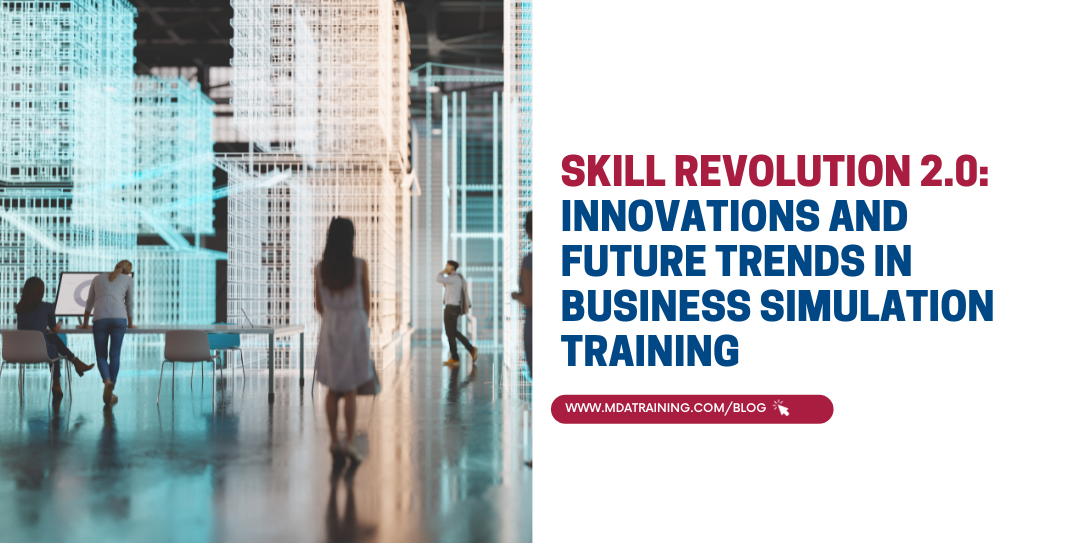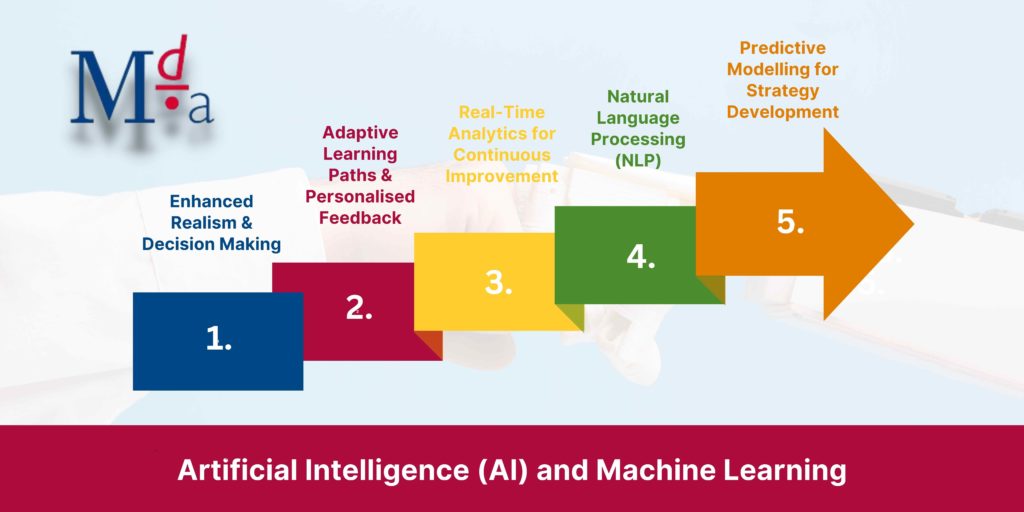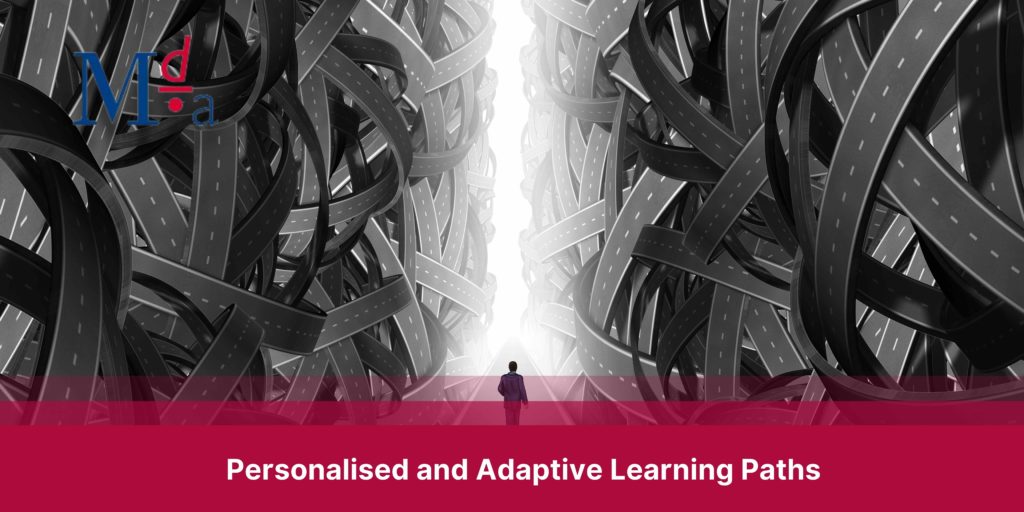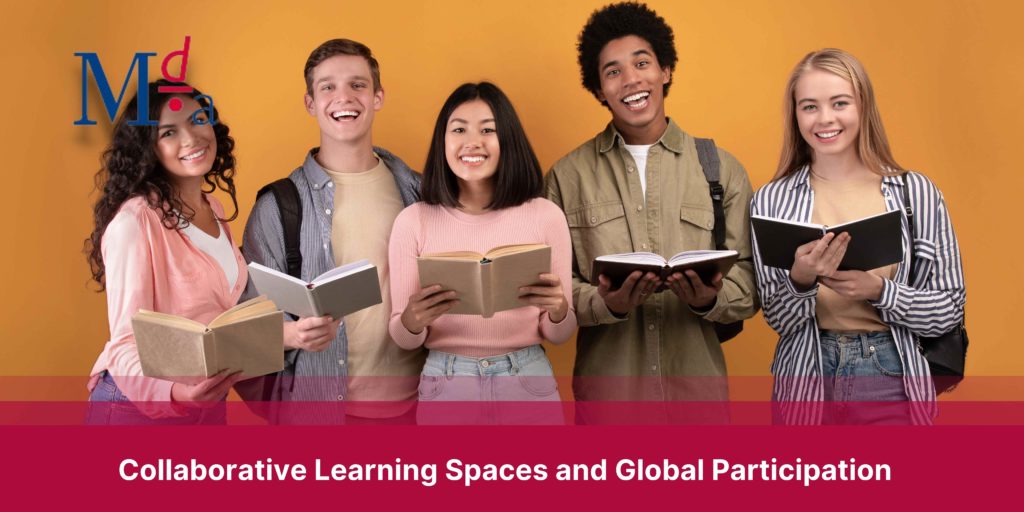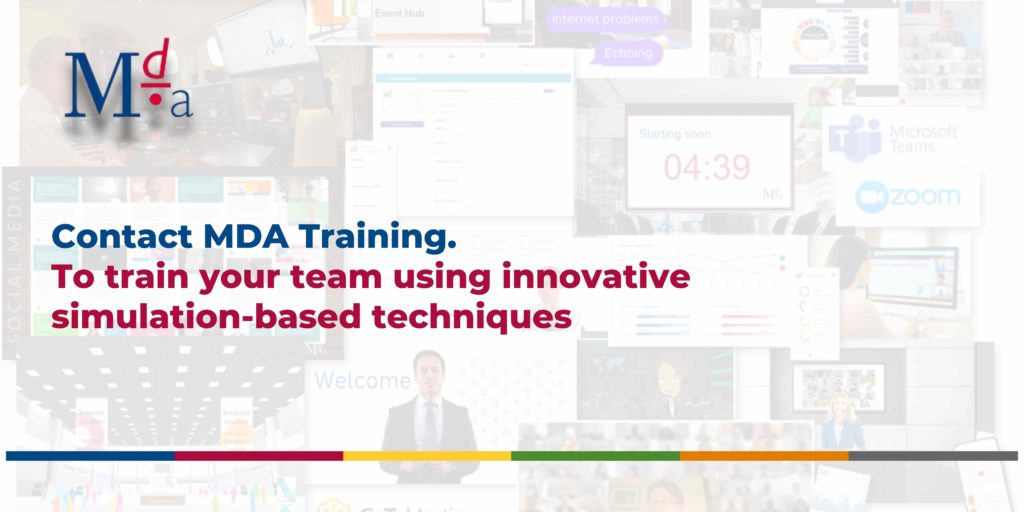Business simulation training has rapidly evolved over the years, becoming a cornerstone in developing professional skills for teams across various industries. As technology advances and learning methodologies continue to transform, it’s crucial to stay updated on the latest trends and innovations in business simulation training. In this blog, we will explore the future of business simulation-based training, focusing on emerging trends and technologies that are reshaping the landscape of professional skill development.
1. Incorporating Artificial Intelligence (AI) and Machine Learning:
In the ever-evolving landscape of professional development, the integration of Artificial Intelligence (AI) and Machine Learning (ML) into business simulation training is reshaping how individuals and teams acquire and enhance their skills. AI and ML technologies are propelling business simulations into a new era, enriching the learning experience and preparing professionals for the challenges of an increasingly complex business world.
1.1 Enhanced Realism and Decision Making:
“The infusion of AI into business simulations brings a level of realism and complexity that is unparalleled. Participants can experiment with different strategies and witness AI-driven responses, enriching their understanding of business dynamics.” – Dr. Laura Chen, AI Researcher.
AI and ML algorithms have the potential to create highly dynamic and responsive simulated environments. These environments closely resemble real-world scenarios, providing learners with a holistic understanding of various business contexts. Participants can interact with AI-powered simulated entities, enabling them to make decisions and witness the immediate and long-term consequences, thus fostering improved decision-making skills.
1.2 Adaptive Learning Paths and Personalised Feedback:
A study by McKinsey found that personalised learning interventions based on AI can lead to an efficiency improvement of 15-20%.
One of the key advantages of incorporating AI and ML is the ability to tailor learning experiences for each participant. These technologies analyse individual performance data, identifying strengths and weaknesses. Based on this analysis, the simulation can adapt, presenting challenges and scenarios that focus on areas requiring improvement. Personalised feedback is provided, guiding participants to enhance specific skills and competencies.
1.3 Real-Time Analytics for Continuous Improvement:
AI-powered business simulations generate a wealth of data regarding participant interactions, decisions, and behaviours. Advanced analytics processes this data in real-time, offering actionable insights into the learning progress and performance of individuals and teams. Training facilitators can utilise these insights to modify the simulation on-the-fly, ensuring that the learning objectives are met and facilitating continuous improvement.
Case Study: A leading corporation based in the UK utilised AI-driven analytics during their sales training simulation. Real-time data analysis allowed immediate identification of successful strategies, enabling participants to optimise their approaches.
1.4 Natural Language Processing (NLP) for Interactive Communication:
Incorporating NLP within business simulations enables natural and interactive communication with simulated characters or interfaces. Participants can engage in conversations, negotiations, or presentations, improving their communication and interpersonal skills in a realistic virtual environment. This fosters a more immersive learning experience, preparing professionals for diverse business communication scenarios.
1.5 Predictive Modelling for Strategy Development:
ML algorithms can analyse historical data within a simulation to identify patterns and trends. This data-driven approach allows participants to develop and fine-tune business strategies based on predictive models. Understanding how certain variables affect outcomes equips learners with valuable strategic thinking capabilities essential for effective decision-making.
2. Virtual Reality (VR) and Augmented Reality (AR) Integration:
Virtual Reality (VR) and Augmented Reality (AR) are revolutionising the landscape of business simulation training. The integration of these technologies elevates learning experiences by providing an immersive, interactive, and practical approach to skill development. Let’s delve into how VR and AR are transforming business simulation training and shaping the future of professional development.
2.1 Immersive Learning Environments:
Research by Gartner predicts that by 2022, 70% of enterprises will be experimenting with immersive technologies for consumer and enterprise use, and 25% will have deployed them in production.
VR immerses participants in a fully simulated environment that replicates real-world scenarios. This immersion enhances engagement and retention, allowing participants to practise decision-making and problem-solving in a risk-free, controlled virtual space. AR overlays digital information onto the physical world, creating an interactive learning experience.
2.2 Practical Skill Development:
VR and AR bring a practical dimension to learning, especially in fields that require hands-on training. For instance, in industries like healthcare and engineering, professionals can simulate surgeries or equipment handling. This practical, simulated experience allows professionals to refine their skills without the constraints of real-world consequences.
Case Study: Medical students using VR simulations for surgical training showed a 28% improvement in surgical performance compared to traditional training methods (Journal of Surgical Education).
2.3 Remote Collaboration and Training:
“VR and AR redefine the boundaries of collaboration, allowing teams to come together virtually, interact, and learn in a shared immersive space.” – Professor David Kim, VR/AR Expert.
VR and AR technologies enable collaboration and training regardless of geographical locations. Teams spread across the globe can participate simultaneously in a virtual environment, fostering collaboration, teamwork, and cross-cultural understanding. This is particularly beneficial in today’s globalised work landscape.
2.4 Enhanced Product Prototyping and Design:
According to a report by Deloitte, about 87% of companies using VR and AR in product design see significant improvements in design quality and reduction in time-to-market.
Incorporating VR and AR in product design simulations allows businesses to prototype and visualise products in a three-dimensional virtual space. This enhances product development, enabling iterative testing and modifications before the actual production phase. It ultimately leads to more refined and successful product launches.
2.5 Behavioural Training and Soft Skills Development:
VR simulations can be tailored to provide training in soft skills such as communication, leadership, and customer service. Participants can practise handling challenging situations and interactions, enhancing their emotional intelligence and empathy.
3. Personalised and Adaptive Learning Paths:
Personalised and adaptive learning paths are at the forefront of modern business simulation training. By tailoring learning experiences to the unique needs, preferences, and performance of each participant, organisations can significantly enhance skill development and training outcomes.
3.1 Understanding Personalised Learning:
“Personalised learning in business simulations is akin to tailoring a suit – it fits perfectly, enhancing comfort and performance.” – Dr. Laura Adams, Learning Experience Designer.
Personalised learning in business simulation training involves customising the content, pace, and learning style to suit an individual’s strengths, weaknesses, and learning preferences. This approach recognises that each participant has their own unique way of understanding and assimilating information.
3.2 Adaptive Learning:
According to eLearning Industry, companies that use adaptive learning experience a 50% increase in engagement and a 14% increase in completion rates.
Adaptive learning takes personalization a step further by dynamically adjusting the training content and difficulty level based on an individual’s performance and progress. The simulation software uses algorithms to analyse participant interactions and outcomes, modifying the simulation to focus on areas that require reinforcement.
3.3 Benefits of Personalised and Adaptive Learning Paths:
a) Higher Engagement and Motivation:
Personalised and adaptive learning keep participants engaged by presenting content in a way that resonates with them. This increased engagement translates into higher motivation to complete the training and excel.
b) Optimised Skill Development:
By tailoring the learning journey to each individual’s needs, the training focuses on the specific skills that need improvement, maximising the efficiency and effectiveness of skill development.
c) Flexibility and Autonomy:
Participants have the autonomy to progress at their own pace, fostering a sense of ownership and accountability. They can choose the aspects they want to concentrate on, making the training more meaningful.
3.4 Leveraging Data for Personalization:
Data analytics plays a pivotal role in enabling personalised and adaptive learning paths. Historical performance data, preferences, and real-time interactions are analysed to create a learner profile. This profile is then used to customise the simulation, ensuring that the training aligns with the participant’s learning objectives.
Case Study: A leading tech corporation based in the UK used data analytics to personalise their business simulation training. By analysing past performance data, they identified areas where individual employees struggled the most. Subsequent training sessions were tailored to address those challenges, resulting in a 20% improvement in overall performance.
4. Integration of Blockchain for Skill Verification:
Blockchain technology is disrupting various industries, and one of its promising applications is in skill verification. When integrated into business simulation training, blockchain provides a secure and transparent way to verify and validate the skills acquired during the training process.
4.1 Understanding Blockchain in Skill Verification:
“Blockchain introduces a new level of trust and reliability in skill verification by removing the need for intermediaries and ensuring the integrity of the data.” – Sarah Lee, Blockchain Expert.
Blockchain is a decentralised, distributed ledger technology that records transactions across multiple computers in a secure and transparent manner. When applied to skill verification, it creates an immutable record of an individual’s training and accomplishments. This record can include certifications, achievements, and performance in business simulation training.
4.2 Benefits of Blockchain in Skill Verification:
a) Immutability and Security:
Once data is added to the blockchain, it cannot be altered or deleted. This ensures the integrity and security of the skill verification records, mitigating any possibility of fraud or manipulation.
b) Decentralisation and Transparency:
The decentralised nature of blockchain eliminates the need for a central authority to verify skills. Anyone with the appropriate permissions can access and verify the information, enhancing transparency.
c) Reduced Verification Time and Costs:
Employers and educational institutions can quickly and easily verify a candidate’s skills without relying on third-party verification processes, reducing verification time and associated costs.
4.3 How Blockchain Integrates with Business Simulation Training:
a) Issuing Digital Certificates:
Certificates and achievements earned in business simulation training can be recorded on the blockchain as digital certificates. Each certificate is linked to a participant’s unique identifier.
b) Validation and Verification:
Employers or other stakeholders can independently verify the authenticity and validity of a participant’s certificates by accessing the blockchain. This provides confidence in the skills claimed by the individual.
c) Enhancing Trust in Credentials:
Blockchain verifies the credentials’ authenticity, creating a level of trust between employers and job applicants. It ensures that the claimed skills are legitimate and acquired through reputable training programs.
Case Study: A leading investment bank based in the UK integrated blockchain into its employee training programs. After completing business simulation training, each employee received a digital certificate stored on the blockchain. During the hiring process, potential employers could instantly verify the skills and achievements listed on the candidate’s resume, streamlining the recruitment process.
5. Collaborative Learning Spaces and Global Participation:
Collaborative learning spaces and global participation are transforming the landscape of business simulation training. These approaches enable participants from diverse geographical locations to come together in a virtual environment, facilitating collaboration, knowledge sharing, and a richer learning experience.
5.1 The Rise of Collaborative Learning Spaces:
According to eLearning Industry, 72% of students reported that collaboration improved their learning experiences.
Collaborative learning spaces are online platforms that facilitate interactive and cooperative learning. These spaces allow participants to engage with course materials, simulations, and each other in real-time, fostering a sense of community and collaborative problem-solving.
5.2 The Power of Global Participation:
“Global participation enriches the learning journey by exposing participants to different cultural viewpoints and approaches to problem-solving.” – Dr. Maria Lopez, Education Specialist.
Global participation involves participants from diverse backgrounds, cultures, and locations in a learning environment. Through virtual platforms, individuals can connect and collaborate on a global scale, contributing a broad range of perspectives and experiences.
5.3 Benefits of Collaborative Learning and Global Participation:
a) Diverse Perspectives and Ideas:
Collaborative learning spaces bring together individuals with different backgrounds, expertise, and experiences. This diversity leads to a wider range of perspectives and innovative ideas during simulations.
b) Improved Communication Skills:
Working with a global audience enhances communication skills, as participants need to effectively convey their ideas and thoughts to a diverse group. This prepares professionals for cross-cultural communication in real-world business scenarios.
c) Enhanced Problem-Solving and Decision-Making:
Collaborative problem-solving in a global context promotes critical thinking and better decision-making. Participants learn to analyse challenges from various angles and consider diverse solutions.
5.4. Virtual Collaboration Tools and Platforms:
a) Video Conferencing and Webinars:
Platforms like Zoom, Microsoft Teams, and WebEx enable real-time virtual meetings, discussions, and presentations, creating a space for interactive learning.
b) Collaborative Document Editing:
Tools like Google Workspace and Microsoft 365 allow participants to collaboratively edit documents, encouraging teamwork and shared knowledge creation.
c) Online Discussion Forums:
Dedicated discussion forums provide a platform for participants to engage in conversations, ask questions, and share insights related to the training material and simulations.
What’s Next?
The trajectory of business simulation training is indeed thrilling, propelled by the forefront of technological advancements and a dedication to tailored, hands-on learning experiences. The integration of AI, VR, AR, blockchain, and the encouragement of international collaboration stands as pivotal trends moulding this terrain. As organisations embrace and implement these innovations, a realm of enhanced professional skill development unfurls, priming their teams for the dynamic and fiercely competitive workplace of the future.
Reach out to MDA Training today to discover how our expertise can elevate your organisation’s training strategies and propel your team toward success in this ever-evolving landscape!


















